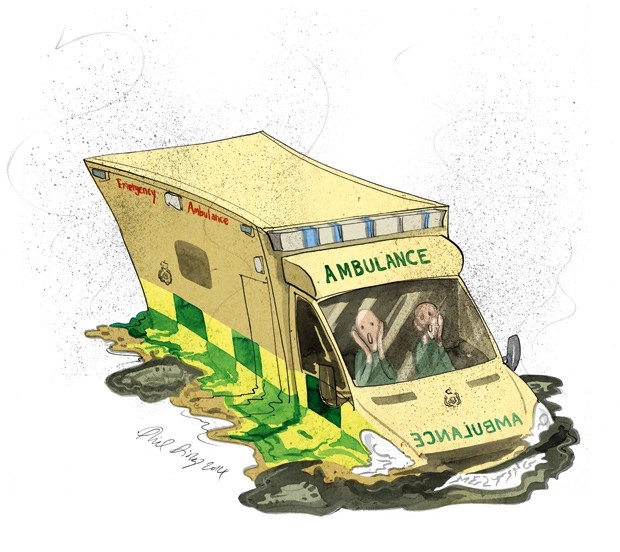Some £22 billion of the £40 billion in tax rises the Chancellor announced this week will go straight to the NHS – an NHS that was already better funded than at any point in its history. It seems that no matter how many cash injections – huge or enormous – the health service gets, its problems continue. Could staff sickness be part of the problem? I’ve crunched the numbers for The Spectator’s data hub and this is what I found.
The NHS is a notoriously stressful place to work and The Spectator’s analysis of sickness data for hospital and community services staff shows the toll it takes – as well as the huge variation between different roles.
Doctors, who are traditionally viewed as the backbone of healthcare, seem to fare slightly better in coping – or perhaps they’re simply more reluctant to take time off. Consultants take, on average, 1.5 sick days for mental health, while junior doctors in their first year take less than a day off on average (0.8 days).
Further down the hospital hierarchy, the picture changes. Nurses, midwives, and ambulance staff – those who interact the most with patients – bear the brunt of the NHS’s mental health crisis, taking off more than a week per year on average.
The NHS frontline has long been understaffed, with vacancy rates reaching more than 10 per cent. It’s unsurprising that staff burn out and take time off. A recent Care Quality Commission report on maternity care failures in Middlesbrough identified burnout as a major risk, with consequences that can be catastrophic, not only for patient safety but also in terms of rising compensation costs.
This isn’t just isolated to those on the frontline. Staff in the central and hotel functions are taking off more time for this than nurses, suggesting that work stress permeates the entire NHS.
What’s striking is that the variation isn’t just by role, but also by region. The chart below shows the sickness absence for three major urban hospital trusts. There’s no particular reason why absence for cancer, infections or fractures should differ significantly across regions, suggesting that workplace stress may be the underlying factor.
Similarly this chart shows the variation between three ambulance trusts:
The same trend appears here. While the pandemic shook up everything, West Midlands Ambulance has consistently maintained a lower absence rate – around 50 per cent less than their counterparts in London or the East Midlands.
This points to something important: parts of the NHS can, and perhaps should, learn from others. While the NHS as a whole may be a pressure cooker, some trusts appear to be handling that pressure more effectively, keeping staff healthier and more resilient.
For the sake of staff wellbeing and service quality, NHS England should look closely at this data. Sharing best practices could make a real difference, ensuring a healthier workforce – and ultimately, better patient care.







Comments